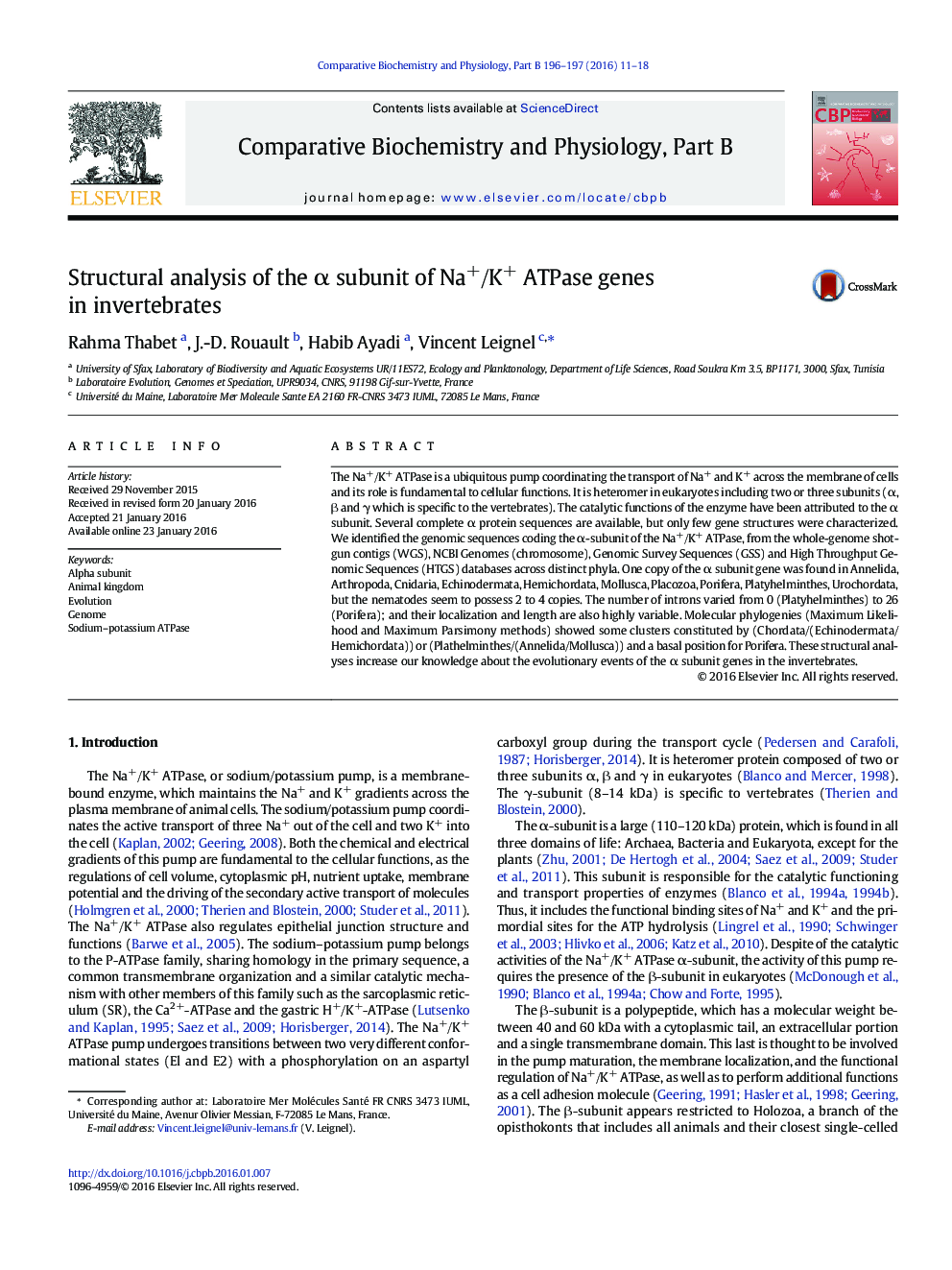| Article ID | Journal | Published Year | Pages | File Type |
|---|---|---|---|---|
| 1975058 | Comparative Biochemistry and Physiology Part B: Biochemistry and Molecular Biology | 2016 | 8 Pages |
The Na+/K+ ATPase is a ubiquitous pump coordinating the transport of Na+ and K+ across the membrane of cells and its role is fundamental to cellular functions. It is heteromer in eukaryotes including two or three subunits (α, β and γ which is specific to the vertebrates). The catalytic functions of the enzyme have been attributed to the α subunit. Several complete α protein sequences are available, but only few gene structures were characterized. We identified the genomic sequences coding the α-subunit of the Na+/K+ ATPase, from the whole-genome shotgun contigs (WGS), NCBI Genomes (chromosome), Genomic Survey Sequences (GSS) and High Throughput Genomic Sequences (HTGS) databases across distinct phyla. One copy of the α subunit gene was found in Annelida, Arthropoda, Cnidaria, Echinodermata, Hemichordata, Mollusca, Placozoa, Porifera, Platyhelminthes, Urochordata, but the nematodes seem to possess 2 to 4 copies. The number of introns varied from 0 (Platyhelminthes) to 26 (Porifera); and their localization and length are also highly variable. Molecular phylogenies (Maximum Likelihood and Maximum Parsimony methods) showed some clusters constituted by (Chordata/(Echinodermata/Hemichordata)) or (Plathelminthes/(Annelida/Mollusca)) and a basal position for Porifera. These structural analyses increase our knowledge about the evolutionary events of the α subunit genes in the invertebrates.
